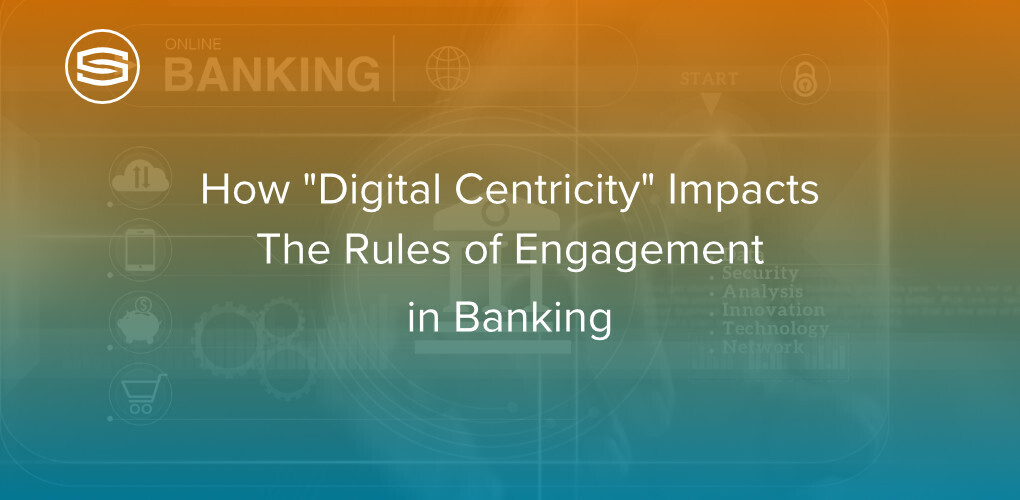
Insights & Opinions
How "Digital Centricity" Impacts The Rules of Engagement in Banking
Mon, 19 Feb 2024


“How many of you regard your everyday banking institution as being truly customer centric and would be willing to recommend them to a friend or colleague on that basis?” I asked the audience at The Banking Scene Conference Luxembourg on January 30, as the participants for the next panel sat down on the stage behind me.
We had all just been listening to the opening keynote “Leadership of Digital Transformation: The Case of CEOs in The Banking Industry” delivered by Jean Elia, and the title of the panel I was about to moderate was “The Building Blocks for a Modern, Customer-Centric Bank Model”.
Jean’s keynote was a distillation of the key learnings from his doctoral thesis, for which he interviewed 21 CEOs in banks. It offered a comprehensive and engaging exploration of the skills, attitudes and approaches required to successfully lead digital transformation in the banking industry and how, when properly executed, this impacts customer interactions and reshapes the very nature of the bank, and the industry.
Many of the speakers in the panel that followed, referenced key points Jean made in his keynote, which reinforced his messages, which in turn led me to the conclusion that Digital Transformation as outlined by Jean, and Customer Centricity, as discussed in our panel, are deeply intertwined topics – hence the title of this blog.
Going back to my provocative question to the audience – how would you have responded?
At a rough guess, I estimated that less than 20% of the audience raised their hands ……. does this surprise you?
Why is it that the vast majority of us do not consider the providers of our everyday banking services to be customer centric?
Customer Expectations
Early in his keynote, Jean made the point “Digital transformation enables us to interact entirely differently with clients and disrupt the business model of banking in ways we could not without these digital technologies”.
When I asked the panel to provide examples of what they considered to be “truly customer-centric” organisations, they cited Amazon, BOL (The primary Dutch competitor to Amazon, also prevalent in Belgium), Apple, Audi, a few specific big brands, and retail stores but not a single one could name a bank or financial institution that they would rate highly on customer centricity.
When I asked them WHY they considered these organisations to be truly customer-centric, they cited examples personalised offers, tailored services and excellent customer service as the foundations of customer-centricity.
One of the panellists echoed Jean’s sentiment by saying “In a truly customer-centric model, banking services should not only meet basic needs but also deliver pleasure and moments of delight”.
While “moments of delight” might be considered a step too far for seasoned bankers right now, even getting the basics right would significantly improve their customers perceptions.
Every one of us is a customer of a bank and we live our lives across multiple digital channels on a daily basis. Why is it so hard then for a bank to recognise this and meet us where we are? Why is there still so much paper and many manual interactions in the process? Why don’t the majority of banks use the wealth of personal information they already have on each of us to personalise the service and offers given to us?
One panellist pointed out, "Banking needs to catch up with the digital transformation seen in other sectors", underscoring the fact that from a customer perspective, banks just aren’t there yet. It was also mentioned that the expectations of the audience in the room may well be even higher than the average customer, due to our shared interest in banking and financial services.
Customers no longer seek mere transactions; they expect the customer experience to be relevant to their personal context and situation. The panel dialogue underscored a pressing need for banks to transcend historical service paradigms, leveraging technology to craft experiences that are not just convenient but also emotionally engaging. This evolution demands a blend of digital and human touch, ensuring that technology serves as an enabler of personalised interactions rather than a barrier.
The Human Touch
The balance between digital innovation and maintaining a personal touch was called out as a critical point.
I asked the panel if increasing digitalisation and increasing customer centricity were mutually exclusive: "It's about finding the right balance between digital convenience and human interaction," shared a panellist. The evolving expectations from customers demand a seamless integration of digital and physical banking channels, ensuring accessibility and personalisation in service delivery.
There was a consensus that from a customer’s perspective, all banks provide the same basic services, and as a result, excellent customer service is one of the few ways in which a bank can truly differentiate itself from the competition.
Why is it then that most banks only provide (human) customer services during “banking hours”? For many of us, our daily workload in our job leaves little time to deal with our bank – particularly when the typical customer service telephone wait times for most banks is ……… well, shall we just say longer than we would like! (Contrast this with Apple’s customer service where you can speak to a human within a few minutes at any time of the day!). Sometimes, in their rush to demonstrate how innovative and truly digital they are, some Fintechs and Neobanks end up overlooking the importance of the human touch.
As an aside, I have recently had first-hand experience of this while opening up a sole-trader account with a well known, but relatively new bank in the UK. Their account opening process is all completely mobile based which sounds great. But when they started asking for documents that I don’t have available on my mobile phone, the entire process started to break down as I couldn’t continue the application on my laptop, where the documents are held. I also could not speak to a human as part of the process because I didn’t have an account yet ……… but that is a story for another day!
This does however underline another point made by a panellist would said: "Every interaction matters, from the first click to the last", highlighting the need for consistency across all channels.
Data & Privacy
Open banking was highlighted as a significant opportunity for enhancing customer centricity. By leveraging data and API's, banks can offer the more personalised services that customers are looking for, at the point where they need them the most. However, concerns around data privacy and trust cannot be overlooked. "Finding the right balance between utilising data for personalisation and respecting customer privacy is paramount" one expert remarked while another noted “Trust and transparency are non-negotiable”. It seems there are currently organisations we trust, and organisations we rate high on customer-centricity, but there are very few (if any) where both are true.
There is a line which I have often called “creepy or cool” which is a difficult one to tread. Will your customers appreciate the knowledge you have about them and consider it “cool” when you offer them highly personalised products and services, or will they think it’s “creepy”? While I personally would welcome the idea of my own bank making me adjacent offers (like Amazon does), one of the other panel members said they would consider this a violation of their privacy.
In the UK, we are beginning to evolve from open banking to “open everything” and the Open Data Institute anticipates the size of the global open banking market to reach $395bn by 2026!
The panellists acknowledged there are clearly huge opportunities for banks in the future, if they can find the right balance between creepy and cool.
Culture & Leadership
Perhaps one of the hardest challenges for banks to overcome relate to culture. I’m sure many members of the public that don’t work in financial institutions, are sceptical regarding the ability, or desire, of a bank to prioritise customer-centricity over profit.
I cited a statistic included in a report from EY last year that states “67% of businesses experienced at least one underperforming transformation over the last five years” with lack of customer-centricity being one of the reasons for failure. They go on to say “most banks think their transformation initiatives are customer-centric …… The harsh reality, however, is that most transformations at banks are business-driven — not customer-centric”. All the panellists agreed however, it feasible and desirable to be both.
In his keynote, Jean had stressed: “Leadership in implementing digital transformation comes before technology... It's about people, not only about technology” and one of the panellists reinforced this saying about customer-centricity that “It requires a cultural shift within the organisation, supported by agile and lean principles”.
Both Jean and the panellists agreed that digital transformation is not only about transforming what the customers see at the front end. It’s no good if the customers have a nice shiny app to use while the employees struggle with decades old technology and outdated processes at the back end. The journey towards becoming a truly customer-centric organisation requires that you also focus on the internal employee experience and embed customer-centricity into the very DNA of the organisation, with one panel member saying that customer-centricity was a core pillar of an organisation they had worked in.
Everyone agreed that the only way for culture to change is for it to start from the very top of the organisation and cascade down, which Jean stressed requires strong leadership with a hands-on involvement.
In Conclusion
The essence of our discussions could be distilled into a simple yet profound principle: at the heart of a modern, customer-centric bank model lies the commitment to understanding and meeting the diverse needs of customers.
As we navigate the complexities of the financial services landscape, this principle serves as our guiding light, driving us toward a future where banking is not just a transaction but a meaningful part of our customers' lives, and to achieve this, we must undergo a full and complete digital transformation.
The way to do this was neatly summed up by Jean in 3 key points, which are also the title of his book that we gave to all attendees at the conference:
- Think Digital – focus on customer needs and expectations, conceive products and services with their full digital life-cycle in mind from the start
- Act Digital – implement the digital strategy, both internally and externally, leveraging digital capabilities to reinvent your business model
- Speak Digital – communicate through digital channels, not just “speaking about” digital, but including “speaking digital” via API’s to leverage 3rd party capabilities
We continue to explore many of these topics and more under our theme “The Paradigm Shift in Banking: Transforming The Rules of Engagement” at The Banking Scene Conference Amsterdam on March 26 – join us for deep discussion and lively debate!